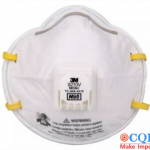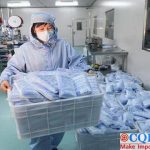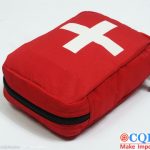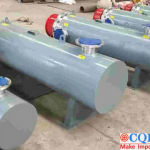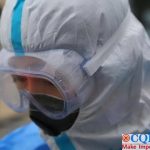How to Improve the Meltblown Fabric Filtration Efficiency ?
As the core material of medical masks, melt-blown nonwoven fabrics directly affect the protective effect of masks. There are many factors that affect meltblown fabric filtration efficiency, such as fiber linear density, fiber web structure, thickness and density.
However, as an air filter material for a mask, if the material is too tight, the pores are too small, and the breathing resistance is too large, the user cannot smoothly inhale the air, and the mask loses its value.
This requires that the filter material not only improve the meltblown fabric filtration efficiency, but also reduce its breathing resistance as much as possible in the melt blown fabric production process, which is a contradiction between breathing resistance and filtration efficiency. The static electret treatment process is the best way to solve the contradiction between filtration efficiency and respiratory resistance.
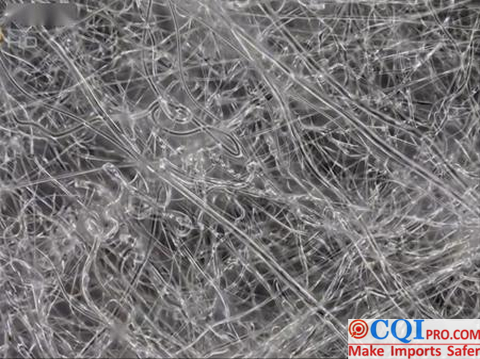
The mechanism of Meltblown Fabric Filtration Efficiency
Among the filtration mechanisms of melt-blown filter materials, the generally accepted mechanisms include Brownian diffusion, trapping, inertial collision, gravity settling, and electrostatic adsorption. Since the first four principles are all mechanical barriers, the principles that affect meltblown fabric filtration efficiency can be simply summarized as mechanical barriers and electrostatic adsorption.
- mechanical barrier
The average fiber diameter of polypropylene melt-blown fabric is 2 to 5 μm, and droplets with a particle size greater than 5 μm in air can be blocked by the melt-blown fabric.
When the diameter of the fine dust is less than 3μm, the fibers in the meltblown fabric are randomly arranged with the interlayer to form a fiber filter layer with multiple curved channels. When the particles pass through various types of curved channels or paths, the fine dust is mechanical The filter-type van der Waals force is adsorbed on the fiber surface.
When both the particle size and the air flow velocity are large, the air flow closes to the filter material due to obstruction and flows around, while the particles are separated from the streamline due to inertia and directly collide with the fiber to be captured. When the particle size is very small and the flow velocity is very low, the particles are trapped on the fibers due to the diffusion of Brownian motion and captured.
2.Electrostatic adsorption
Electrostatic adsorption means that when the fibers of the filter material are charged, the particles can be captured by the Coulomb force of the charged fibers (electret). When particles such as dust, bacteria, viruses, etc. pass through the filter material, the electrostatic force can not only effectively attract the charged particles, but also capture the induced polarized neutral particles with the electrostatic induction effect. As the electrostatic potential increases, the electrostatic adsorption is stronger.
Electrostatic electret process
Because the filtration efficiency of ordinary melt-blown non-woven fabrics is less than 70%, the meltblown fabric filtration efficiency produced by purely mechanical blocking of the three-dimensional fiber assembly of fine, small voids and high porosity of melt-blown ultrafine fibers is not enough Yes, so melt-blown filter materials generally add electrostatic charge effect to the melt-blown fabric through the electrostatic electret process, and use the electrostatic method to improve the meltblown fabric filtration efficiency, so that its filtration efficiency can reach 99.9% to 99.99%, very thin One layer can reach the expected standard, and the respiratory resistance is still small.
In the corona discharge method, the melt-blown fiber web is charged by one or more groups of corona discharge through the electrostatic generator needle electrode (voltage is generally 5-10KV) before winding, and the needle tip is applied when high voltage is applied The air below generates corona ionization and local breakdown discharge. Carriers are deposited on the surface of the meltblown fabric by the electric field. Part of the carriers will penetrate deep into the surface and be captured by the trap of the electret masterbatch, making the meltblown fabric become electret filter material, thus improving meltblown fabric filtration efficiency on the original basis.
The current electrostatic electret methods mainly include electrostatic spinning method,corona discharge method,triboelectric method,thermal polarization method, low energy electron beam bombardment method, etc., among which corona discharge method is currently the best electrostatic electret method.
Increasing the charge on the surface of the meltblown fabric can be obtained through the meltblown fabric electret process, but for this electrostatic storage to not decay, the composition and structure of the meltblown electret material are required to facilitate charge retention. The way to improve the charge storage capacity of electret materials can be to induce charge traps by introducing additives with charge storage properties.
Therefore, if Chinese factories want to improve meltblown fabric filtration efficiency, they also need to add high-voltage electrostatic discharge devices to the production line, and need to add electret masterbatch, such as tourmaline particles, to the production raw material polypropylene (PP).

CQI5 is committed to providing importers worldwide with product quality inspection services that far exceed those of our peers. If you are planning to import or have imported from China or Southeast Asian countries, please contact us cs’@’cqipro.com to learn more about how we can make your imports safer.
This article is an original article for CQI Inspection, who is committed to providing high-quality product inspection technology and know-how sharing for global importers and retailers to make imports safer.
All rights reserved. The contents of this website provided by CQI Inspection may not be reproduced or used without express permission.
For reprint, please contact with CQI Inspection, thank you.

